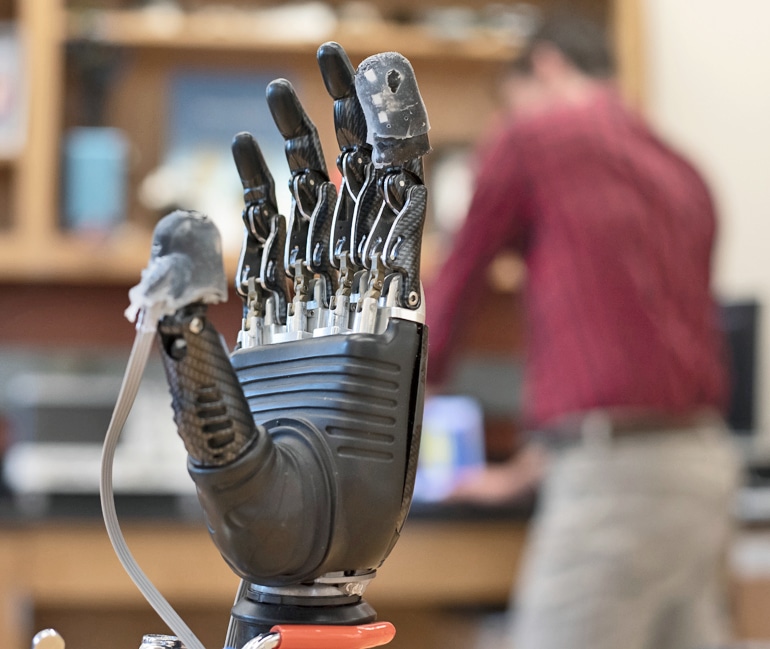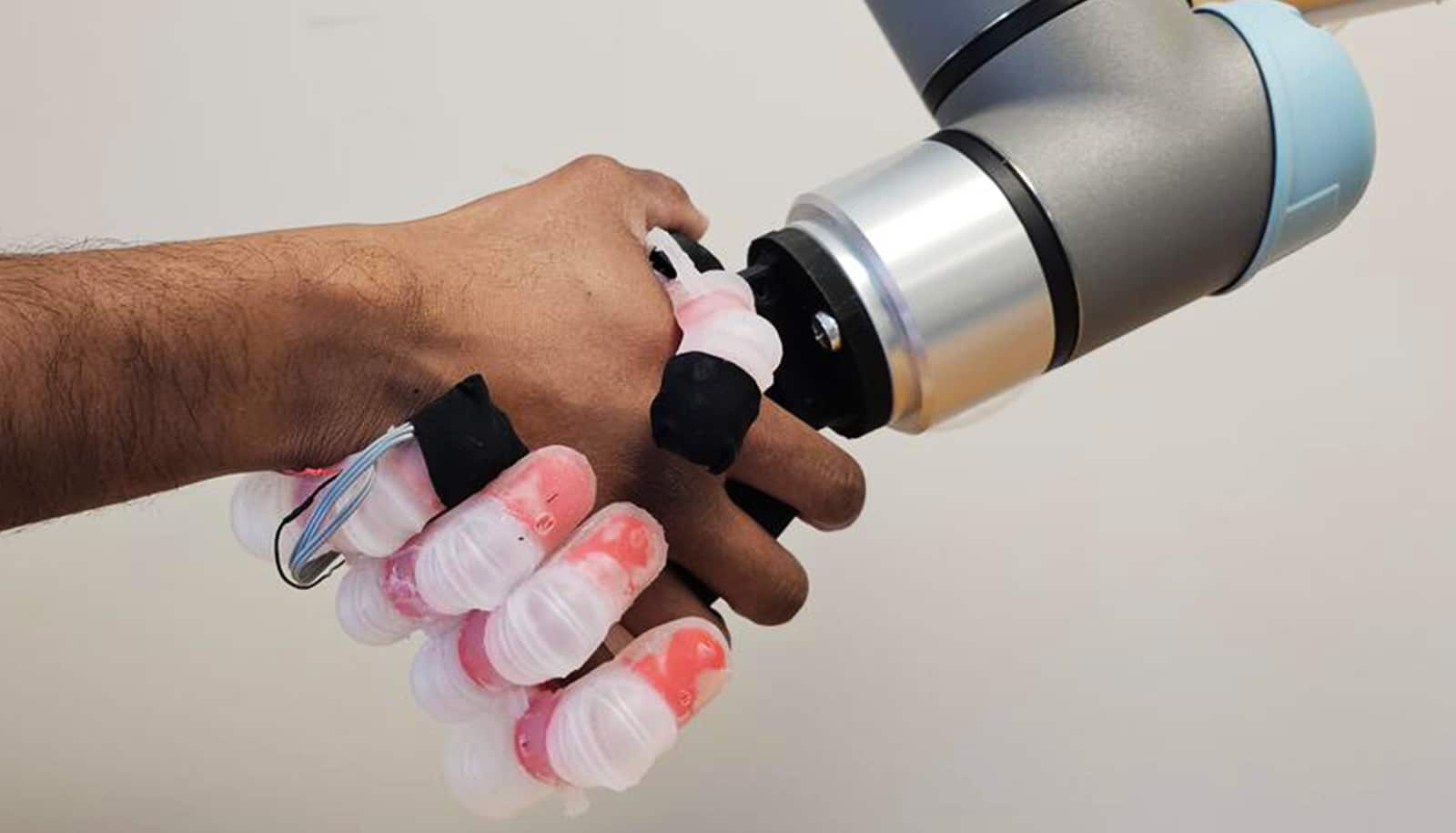A new electronic “skin” may restore a sense of touch for amputees who use prosthetic hands.
The skin’s inventors say that when the “e-dermis” is layered on top of a prosthetic, it brings back feeling through the fingertips.
“After many years, I felt my hand, as if a hollow shell got filled with life again,” says the anonymous amputee who served as the team’s principal volunteer tester.
Made of fabric and rubber laced with sensors to mimic nerve endings, e-dermis recreates a sense of touch as well as pain by sensing stimuli and relaying the impulses back to the peripheral nerves.
“We’ve made a sensor that goes over the fingertips of a prosthetic hand and acts like your own skin would,” says lead researcher Luke Osborn, a biomedical engineering graduate student at Johns Hopkins University. “It’s inspired by what is happening in human biology, with receptors for both touch and pain.

“This is interesting and new,” Osborn adds, “because now we can have a prosthetic hand that is already on the market and fit it with an e-dermis that can tell the wearer whether he or she is picking up something that is round or whether it has sharp points.”
The work, which appears in Science Robotics, shows it’s possible to restore a range of natural, touch-based feelings to amputees who use prosthetic limbs. The ability to detect pain could be useful, for instance, not only in prosthetic hands but also in lower limb prostheses, alerting the user to potential damage to the device.
Bringing a more human touch to modern prosthetic designs is critical, especially when it comes to incorporating the ability to feel pain, Osborn says.
“Pain is, of course, unpleasant, but it’s also an essential, protective sense of touch that is lacking in the prostheses that are currently available to amputees. Advances in prosthesis designs and control mechanisms can aid an amputee’s ability to regain lost function, but they often lack meaningful, tactile feedback or perception.”
That is where the e-dermis comes in, conveying information to the amputee by stimulating peripheral nerves in the arm. The device does this by electrically stimulating the amputee’s nerves in a non-invasive way, through the skin, says the paper’s senior author, Nitish Thakor, professor of biomedical engineering and director of the Neuroengineering and Biomedical Instrumentation Laboratory.
“For the first time, a prosthesis can provide a range of perceptions, from fine touch to noxious to an amputee, making it more like a human hand,” says Thakor, cofounder of Infinite Biomedical Technologies, the Baltimore-based company that provided the prosthetic hardware used in the study.
The researchers connected the e-dermis output to the volunteer by using a noninvasive method known as transcutaneous electrical nerve stimulation, or TENS. In a pain-detection task, the team determined that the test subject and the prosthesis were able to experience a natural, reflexive reaction to both pain while touching a pointed object and non-pain when touching a round object.
This artificial skin can sense ladybug footsteps
The e-dermis is not sensitive to temperature—for this study, the team focused only on detecting object curvature (for touch and shape perception) and sharpness (for pain perception).
The e-dermis technology could make robotic systems more human, and it could also expand or extend to astronaut gloves and space suits, Osborn says.
‘Skin’ sensor gives robots better sense of touch
The researchers plan to further develop the technology and better understand how to provide meaningful sensory information to amputees in the hopes of making the system ready for widespread patient use.
Other researchers from the Johns Hopkins departments of biomedical engineering, electrical and computer engineering, and neurology, and from the Singapore Institute of Neurotechnology contributed to the work. Space@Hopkins, the Applied Physics Laboratory, and the National Institute of Biomedical Imaging and Bioengineering funded the work.
Source: Johns Hopkins University



